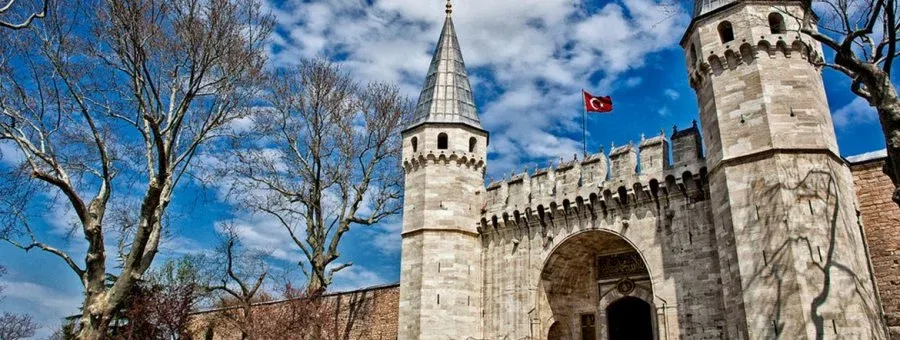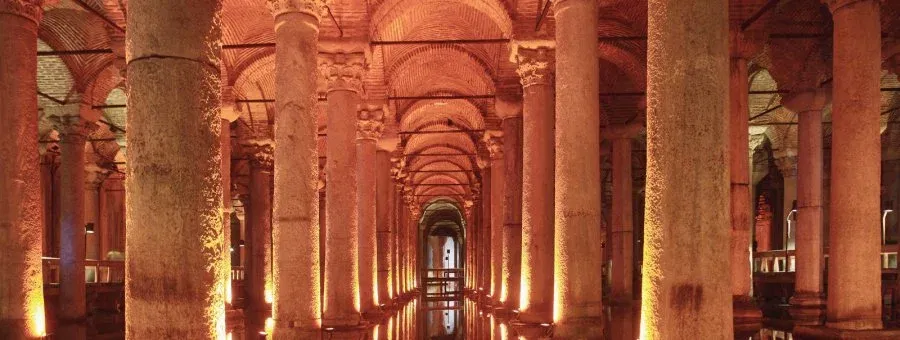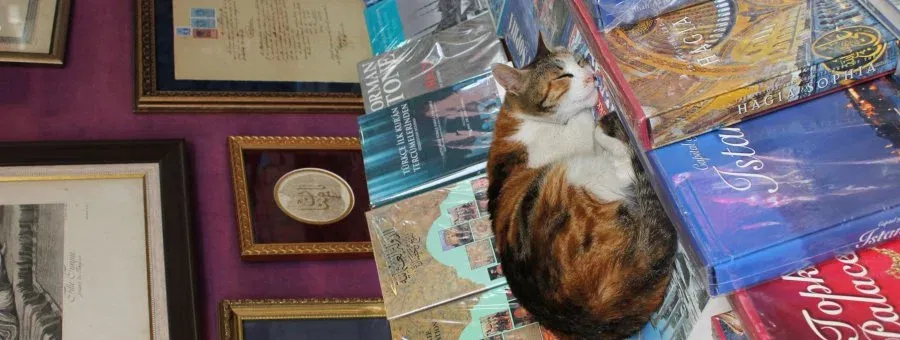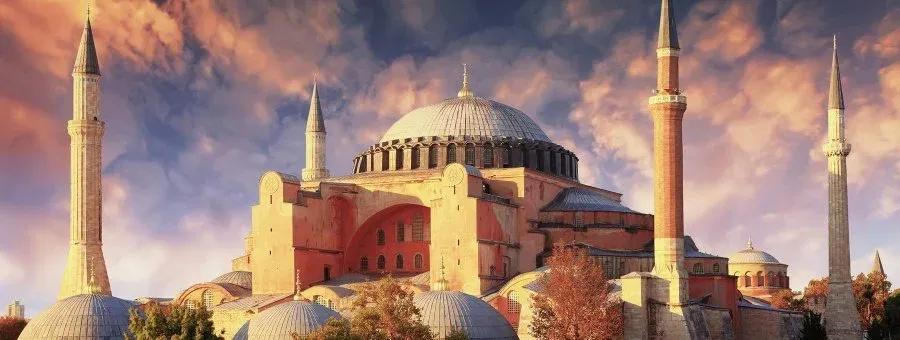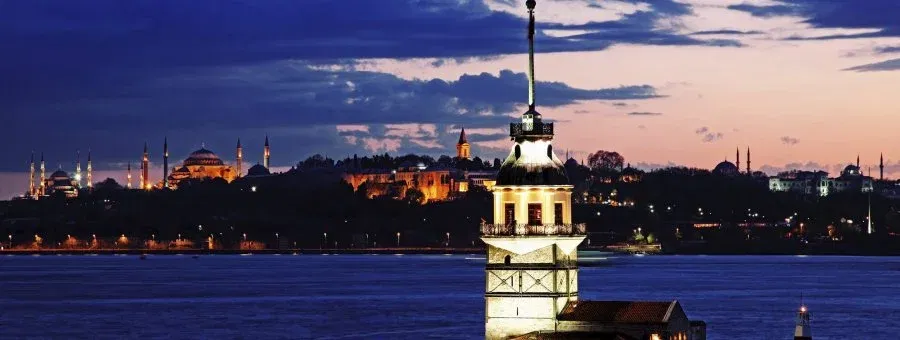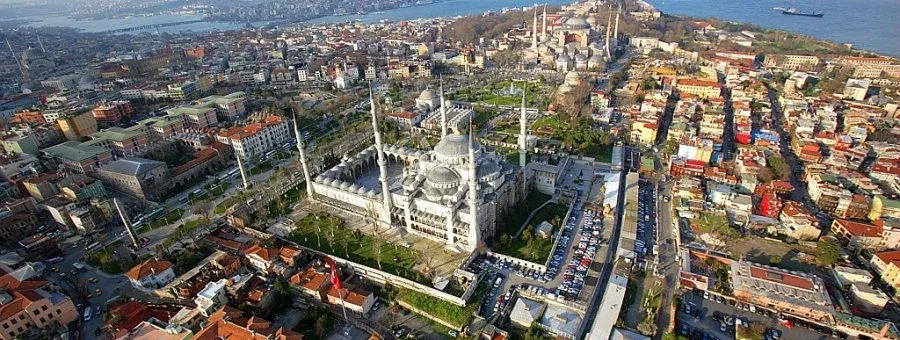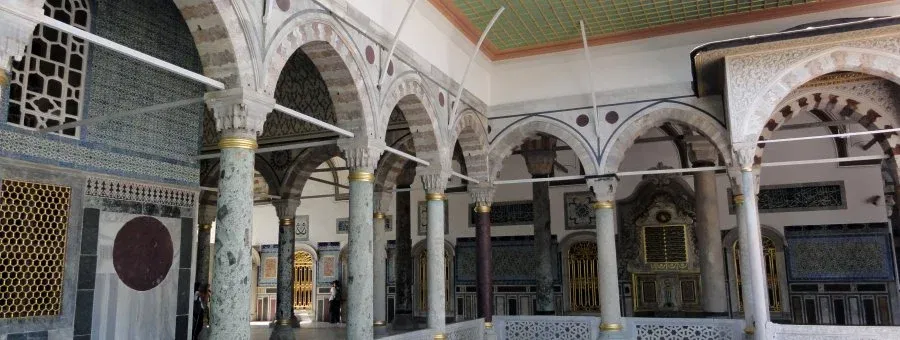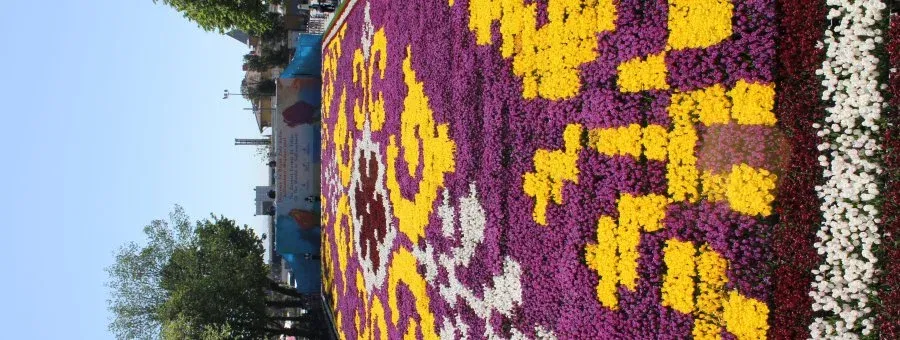Topkapi
The Topkapi Palace (Turkish: Topkapi Sarayi) is a palace in Istanbul, Turkey, which was the official and primary residence in the city of the Ottoman Sultans, from 1465 to 1853. The palace was a setting for state occasions and royal entertainments and is a major tourist attraction today. The name directly translates as "Cannongate Palace", from the palace being named after a nearby gate. Initial construction started in 1459, ordered by Sultan Mehmed II, the conqueror of Byzantine Constantinople. The palace is a complex made up of four main courtyards and many smaller buildings. At the height of its existence as a royal residence, the palace was home to as many as 4,000 people, formerly covering a larger area with a long shoreline. The complex has been expanded over the centuries, with many renovations such as for the 1509 earthquake and 1665 fire. Topkapı Palace gradually lost its importance at the end of the 17th century, as the Sultans preferred to spend more time in their new palaces along the Bosporus. In 1853, Sultan Abdül Mecid I decided to move the court to the newly built Dolmabahçe Palace, the first European-style palace in the city. Some functions, such as the imperial treasury, the library, mosque and mint, were retained though. After the end of the Ottoman Empire in 1921, Topkapi Palace was transformed by government decree on April 3, 1924 into a museum of the imperial era. The Topkapı Palace Museum is under the administration of the Ministry of Culture and Tourism. The palace complex has hundreds of rooms and chambers, but only the most important are accessible to the public today. The complex is guarded by officials of the ministry as well as armed guards of the Turkish military. The palace is full of examples of Ottoman architecture and also contains large collections of porcelain, robes, weapons, shields, armor, Ottoman miniatures, Islamic calligraphic manuscripts and murals, as well as a display of Ottoman treasure and jewelry.
